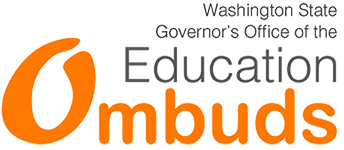Introduction
Updated June 2024
Is your student having a difficult time in school? If your student has a disability, or you suspect they have special learning needs, there is help available. All children and youth between the ages of 3 and 22 who have an impairment interfering with their ability to learn can be eligible for and services to help them achieve a meaningful education.
3 Quick Tips
- A problem that interferes with a student's ability to learn may be considered a disability under the law.
- Every student with a disability affecting their learning has a right to instruction that is specially designed to meet their needs, in a school environment as close to a general education classroom as possible.
- Students cannot be punished for behavior as a result of their disabilities.
When it comes to discipline, students with disabilities who are eligible for special education services are also entitled to unique protections that are more extensive than the protections applied to general education students. While students with disabilities do have all of the same rights as other students (see the Office of the Education Ombuds' webpage on Discipline, Suspensions, and Expulsions for more information) they also have additional, extensive rights protecting them in discipline situations. The law recognizes many students have disabilities that cause or at least are related to problem behavior. The law seeks to ensure that students with disabilities are not excluded from school, and their disabilities and any resulting behavior are handled in appropriate manners. To provide these protections, there are very specific limitations on how a student with a disability can be disciplined.
Why do schools have to provide services for students with disabilities?
There are federal and state laws protecting the educational rights of students with disabilities.
There are two primary laws that protect students with disabilities. The two laws are commonly referred to as “Section 504” and the “IDEA.” In 1973, the U.S. Congress passed Section 504 of the Rehabilitation Act, which made it illegal to discriminate against people with disabilities in programs receiving federal funds, such as public schools. Two years later, Congress passed the Education for all Handicapped Children Act. The federal law is reenacted every three years. It was most recently changed in 2004 and is now called IDEA or IDEIA (the Individuals with Disabilities Education Improvement Act). On this webpage, we refer to the law as IDEA.
In addition, in 1991, Congress passed the Americans with Disabilities Act, commonly referred to as the ADA. Title II of the ADA defines disability in the same manner as Section 504. When the ADA and Section 504 both apply, Section 504 is usually used because it has regulations that are more specific for schools.
Section 504 and IDEA were enacted to ensure that students with disabilities would be provided with meaningful educational experiences.
